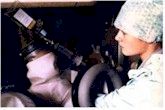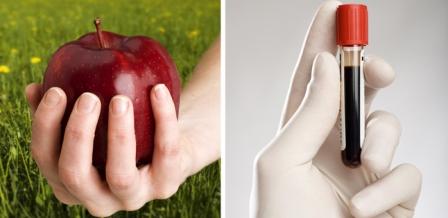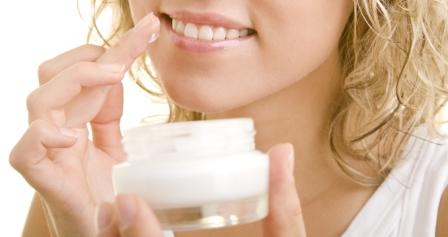
Exercise and Chemotherapy

|
Exercise and Chemotherapy |
|
| Home | Cancer treatments | Lifestyle and cancer | Site map | Contact us | |
| Contents: More about exercise | Find exercise exercise facilities in your area | About heat shock proteins | |
|
Our lifestyle newsletter |
| Team up for top tips, quarterly news updates, articles, poems, recipes Autumn 2010 |
 |
| An inspiring new book,
based only on the facts - help your chances of living longer and stronger .read more/ order |
 |
| An imbalance of vitamins, omega-3, minerals increases the risk of cancer. Measuring blood levels empowers dietary decisions ..read more |
 |
| natureMedical lip balm; natural waxes and essential oils selected for their anti-inflammatory and DNA repair properties. ..read more |
| Chemotherapy Radiotherapy A preparatory film, shown in a RCT, to reduce anxiety and improve well being . ...read more |
It is a misconception that exercise should be avoided during chemotherapy.
Its true your ability to perform strenuous exercise will be impaired but light
exercise should be encouraged. There are several good reasons why regular light exercise
is often helpful. Exercise increases the
sense of self empowerment for both the patients and
carers who can also join in with the activities. It
improves social integration and can make you feel good about yourself. Many
patients reported that exercise restored their confidence earlier after cancer
treatments finished. As well as these general measured, the is strong
evidence that exercise has major
benefits on many of the uncomfortable symptoms experienced during and after
cancer treatments.
Improves psychological well-being, mood and lowers anxiety, depression
Although light and stimulating exercise can help to reduce fatigue, this has to carefully balanced. Although plenty of rest is important, between these times it is better to be active. For example a sleep after lunch may be required but then it would be useful to put on a pair of training shoes and go for walk in the open - preferably in pleasant stimulating surroundings such as a park or riverbank. Although this seems a great effort at first, patients often find their overall levels of fatigue are reduced. (also see living with fatigue)
One of the main benefits of exercise is reducing the risk of thrombosis. Cancer and chemotherapy increase the risk of thrombosis - particularly if there is any disease in the pelvis or lower abdomen. On top of this if patients are less active this further increases the risk. Regular exercise cause the blood to be pumped through the veins and reduce the risk of it stagnating and clotting in the veins.
The steroids often given with chemotherapy can often cause osteoporosis ( thinning of the bones). Exercise by far is the best way of keeping the bones strong and healthy. Steroid can also cause weakness in the muscle - again light exercise can make the muscles stronger.
Many patients (particularly women) put on weight during chemotherapy mainly caused by fatigue ( & lack of exertion) and steroids. Clearly regular light exercise will reduce the risk of weight gain.
Nausea can be a problem with some chemotherapy therapies. If it is mild sometimes an walk or gentle run can do wonders.
Exercise improves your mood by releasing endorphines into the blood stream. This may also prevent the onset of depression.
Towards the end of your chemotherapy course, some veins may feel hard and 'cord-like'. In these veins the blood has clotted (superficial thrombosis) which may take several months to resolve Your doctor may recommend a low dose aspirin but regular grip exercises using a sponge, tennis ball or devices such as power balls are helpful.
Exercise, heat shock
proteins and exercise
In
September 2010, various newspapers reported the results of a laboratory trial from
Ohio and some made the inappropriate conclusion that exercise before chemotherapy is
ill-advised.
These proteins are activated by the body in response to cellular stress such as attack from chemicals, high temperature, infection or lack of oxygen (hypoxia). The heat shock protein-1 activates another protein called Hsp-27 that helps to block cell death. It also interacts with a third protein, p21, which allows cells to repair themselves and keep dividing. Much of the research up to now has concentrated on how this mechanism protects normal issues such as the heart in times of hypoxic stress. It has also been implicated in the aging process. The main stimulus for the body to produce HSP is a raised temperature (associated with infection), lack of oxygen (such as a heart attack), steroid injections such as dexamethasone (routinely given with chemotherapy) and indeed chemical attack from chemotherapy. People who exercise regularly tend to have higher baseline HSP levels, and is one of the explanations why they tend to look younger. There is some clinical evidence that vigorous exercise can increase levels HSP especially if associated with a lack of oxygen, although not all experiments agree with how much it would rise and what level of exercise is required. For example, a study from Toronto measured HSP in muscle in mice while they were exercising, They found that there was no increase in levels when mice where exercising normally on a wheel. Only those exercising anaerobically (sprinting) and simultaneously heated to 40 degrees had any increase in their HSP – condition which would be hard to emulate in humans.
Test in humans also show that regular exercisers do not tend to have a sudden rise rise in HSP when then exercise more vigorously but blood levels can rise if strenuous exercise is taken in a previously sedentary individual. Either way there is little information on whether increased blood and tissue levels of HSP would actually increase levels within cancer masses in humans. experiment involving breast cancer cells from Ohio, showed that adding HSP to the cancer cells in the petri dish made them more resistant to chemotherapy. Following this there was a media frenzy warning that exercise could diminish the killing effect of chemotherapy. They made no comment on the fact that, if indeed HSP were increased in the body, it also would also diminish the harmful side effect, including heart damage. And, although this has not been proven, I suspect the benefit in terms tissue protection would out way the tumour sparing effect - thus actually increasing the therapeutic ratio of chemotherapy. Certainly a therapeutic procedure called hyperthermia (used with chemotherapy and radiotherapy) suggests that heating the tissue actually kills more cancer cells without killing the normal cells.
In summary: There is no evidence, at all, that in humans exercise diminishes the chemotherapy effect. There are several benefits of exercising during chemotherapy. In view of the new Ohio experimental data more research is necessary to see if exercise may be a way to further increase the therapeutic ratio.
>Practical advice: continue chemotherapy and afterward - consider joining a gym or/and a personal trainer. Although the evidence is poor for any risk, avoid extreme aerobic exercise (sprinting) 48 hours before chemotherapy especially in very hot climates/ rooms especially if you do not exercise regularly
 Further
information The book Lifestyle
After Cancer summarises the lifestyle evidence from around the world
and provides practical advice for all stages in the cancer journey. A detailed
film available in English, Italian, Urdu,
Bengali, Gujarati & Hindi explains Radiotherapy & Chemotherapy. Cancernet.co.uk
is a comprehensive cancer information resource written by an experienced team of
doctors, health professionals and patients. It contains links and information
on: Specific cancers:
Breast |
Prostate |
Bowel. Cancer
treatments: Chemotherapy |
Radiotherapy |
Hormones | Biological
agents | Complementary
therapies . Lifestyle and cancer:
Exercise | Diet |
Smoking | Sunbathing
| Alcohol. Tips to help
with symptoms and side effects. Financial issues: Traveling
| Travel insurance| Links
to support groups | Books | Tests
for cancer | Clinical trials | What
is cancer | How to avoid cancer | Glossary
| About us | Disclaimer
| Advertise on this site
Further
information The book Lifestyle
After Cancer summarises the lifestyle evidence from around the world
and provides practical advice for all stages in the cancer journey. A detailed
film available in English, Italian, Urdu,
Bengali, Gujarati & Hindi explains Radiotherapy & Chemotherapy. Cancernet.co.uk
is a comprehensive cancer information resource written by an experienced team of
doctors, health professionals and patients. It contains links and information
on: Specific cancers:
Breast |
Prostate |
Bowel. Cancer
treatments: Chemotherapy |
Radiotherapy |
Hormones | Biological
agents | Complementary
therapies . Lifestyle and cancer:
Exercise | Diet |
Smoking | Sunbathing
| Alcohol. Tips to help
with symptoms and side effects. Financial issues: Traveling
| Travel insurance| Links
to support groups | Books | Tests
for cancer | Clinical trials | What
is cancer | How to avoid cancer | Glossary
| About us | Disclaimer
| Advertise on this site
|
|
|